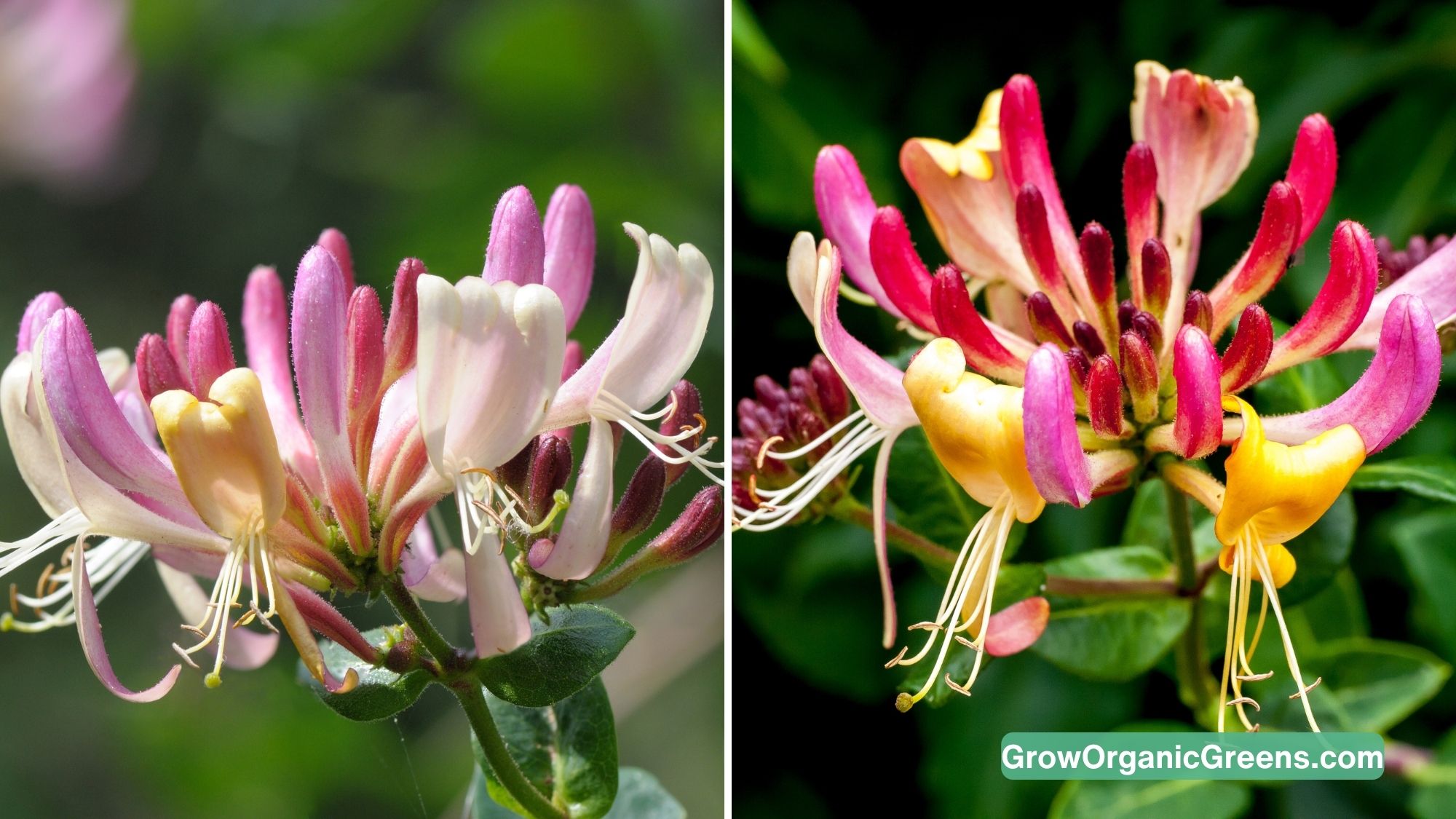Purple-Leaf Japanese Honeysuckle is a striking and versatile plant that adds both color and fragrance to any garden. This article will guide you through the essentials of growing and caring for this perennial vine, ensuring it thrives and enhances your outdoor space. To learn about other types of honeysuckle, check out popular varieties of honeysuckle.
How Does It Look?
Purple-Leaf Japanese Honeysuckle features flowers that start white and turn yellow as they age, creating a beautiful contrast with its distinctive foliage. The buds are small and white, growing in pairs along the stem. The leaves, especially in new growth, have a unique purple tint that gives this plant its name and adds a pop of color to your garden. If you’re interested in other colorful and fragrant options, explore how to grow and care for honeysuckle.
Native
Native to East Asia, including Japan and Korea.
Hardiness Zones
4-9 (USDA). Search your hardiness zone.
Annual/Biennial/Perennial
Purple-Leaf Japanese Honeysuckle is a perennial vine.
Requirements at the Time of Plantation
This honeysuckle prefers moist, well-drained soil but can adapt to various soil types. It can be planted in locations with full sun to partial shade. The best times for planting are in spring or fall, providing the vine with ample time to establish before extreme weather conditions. Conducting a soil test can help ensure the soil meets the ideal conditions for planting.
For improved growth, consider using NPK fertilizers to provide essential nutrients. Integrating mulching can help maintain soil moisture and protect the roots from temperature extremes.
Blooming Season
Purple-Leaf Japanese Honeysuckle blooms from late spring to early summer and may continue sporadically into fall.
How to Take Care
For optimal growth, plant Purple-Leaf Japanese Honeysuckle in an area that receives full sun to partial shade. While it generally does not require additional fertilizer, a balanced fertilizer can be applied in early spring if needed. Regular watering is essential, particularly during dry periods, to keep the soil consistently moist but not waterlogged. Consider setting up a slow drip watering system for pots or the best watering system for raised bed gardens for efficient water management.
Companion planting with other climbers and ground covers can create a visually appealing garden and promote a healthy growing environment. For tips on companion planting strategies, consider integrating plants that thrive alongside honeysuckle.
Uses
- Aesthetic: Purple-Leaf Japanese Honeysuckle is prized for its decorative value, especially the unique purple-tinted foliage that adds an extra layer of visual interest to gardens. It can be grown on trellises or used to cover walls and fences.
- Medicinal: It has limited use in traditional medicine.
- Culinary: This variety is not used for culinary purposes.
How to Propagate
Propagation can be achieved through cuttings. Take cuttings from healthy, established plants and root them in well-draining soil.
Problems and Organic Solutions
Common pests include aphids and spider mites, which can be controlled using neem oil or insecticidal soap. Powdery mildew is another potential issue, manageable by ensuring good air circulation and applying organic fungicides if necessary. Regular pruning and pinching can help maintain plant health and reduce disease incidence.
Special Facts
Purple-Leaf Japanese Honeysuckle is celebrated for its rapid growth and ability to cover large areas quickly. Its sweet fragrance attracts pollinators such as bees and butterflies, adding an ecological benefit to its aesthetic appeal. For more information on how to attract pollinators to your garden, consider planting complementary species that bloom at similar times.
Conclusion
Adding Purple-Leaf Japanese Honeysuckle to your garden can provide both visual and aromatic pleasure. With its beautiful flowers, unique purple-tinted leaves, and relatively easy care requirements, this perennial vine is a wonderful choice for gardeners looking to enhance their outdoor spaces. Ready to enjoy the vibrant blooms and sweet scents of Purple-Leaf Japanese Honeysuckle? Start planting today and watch your garden come to life.
Quick Facts Table
| Aspect | Details |
| Appearance | White to yellow flowers; purple-tinted leaves |
| Native | East Asia (Japan, Korea) |
| Hardiness Zones | 4-9 (USDA) |
| Lifespan | Perennial |
| Plantation Requirements | Moist, well-drained soil; full sun to partial shade; plant in spring/fall |
| Blooming Season | Late spring to early summer, sporadically into fall |
| Care Needs | Full sun to partial shade; balanced fertilizer if needed; regular watering; organic mulch; companion planting with climbers and ground covers |
| Uses | Decorative value; limited traditional medicinal use |
| Propagation | Through cuttings |
| Problems & Solutions | Aphids and spider mites (neem oil, insecticidal soap); powdery mildew (good air circulation, organic fungicides) |
| Special Facts | Rapid growth; attracts pollinators with its sweet fragrance |

Misty S is the founder and lead writer at GrowOrganicGreens.com, a comprehensive gardening resource dedicated to helping people cultivate beautiful and sustainable gardens. She has a Master’s degree in Economics and specialized studies in agricultural economics, horticulture, and soil science. Drawing from her extensive knowledge and experience, Misty shares practical gardening tips on soil preparation, organic manure composting, fertilizers, plant care, and indoor gardening, making her advice accessible and helpful to gardeners of all levels.
Despite having an high-demanding 9-5 job, Misty dedicates her personal time to researching and exploring various gardening topics. Her keen interest in gardening has grown into a passion, driving her to help new gardeners and anyone interested in starting their gardening journey.
Follow Misty’s work and the latest gardening insights and updates on Pinterest. You can reach out to Misty at mistysblogging@gmail.com.

